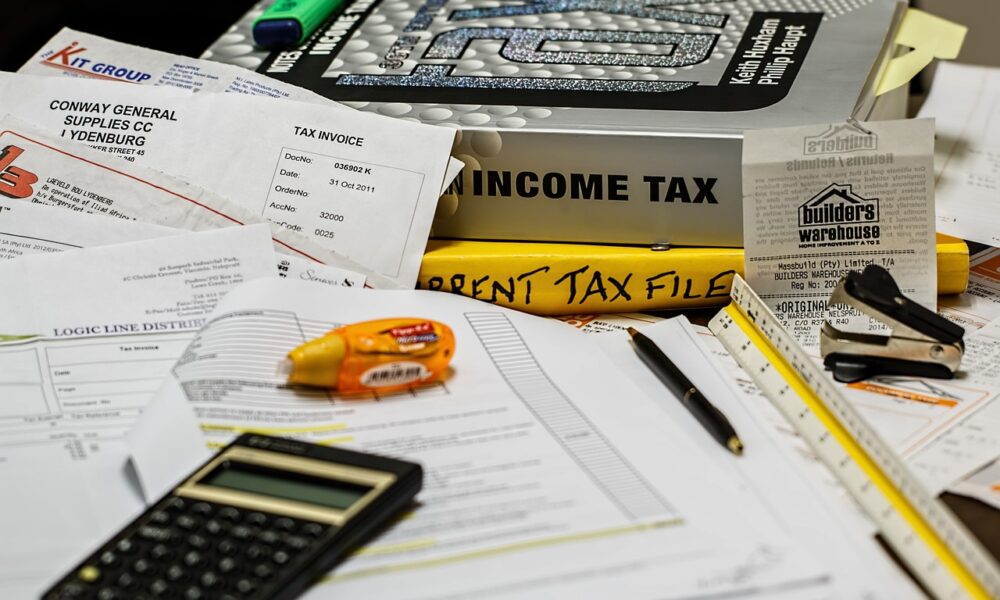A Comprehensive Look at Landlord Tax Documents

As a landlord, understanding the tax documents you need is crucial for compliance and maximizing your deductions. From IRS Form 1065 for partnerships to Form 1120S for S corporations, each document plays a pivotal role in your tax strategy. You’ll also want to grasp the significance of Schedule K-1 and Form 1098. Knowing how to navigate these forms can make a substantial difference in your tax outcome. Let’s explore what you need to know to stay ahead.
Understanding IRS Form 1065 for Partnerships
When you own rental properties as a partnership, understanding IRS Form 1065 is crucial for your tax obligations. This form is essential for reporting your partnership’s income, including rental property earnings and any service income.
Each partner gets a Schedule K-1, which details their share of income and expenses, making it easier to file individual tax returns. You can also maximize your landlord tax deductions by including expenses like property management fees, maintenance costs, and mortgage interest. Timely filing of IRS Form 1065 helps you avoid penalties and simplifies the overall tax process. Familiarizing yourself with these landlord tax forms ensures you’re fully compliant while optimizing your tax situation.
Navigating IRS Form 1120S for S Corporations
How can understanding IRS Form 1120S benefit S Corporations that own rental properties? By mastering this form, you can report your income, losses, deductions, and credits accurately.
This isn’t just for compliance; it also helps you leverage the advantages of pass-through taxation, avoiding corporate-level taxes. You’ll need to report rental income and related expenses, ensuring your landlord tax documents are complete. Your shareholders will receive a Schedule K-1 detailing their share of the financial data, which is crucial for their individual landlord tax return.
The Importance of IRS Schedule K-1 for Pass-Through Income
Understanding the significance of IRS Schedule K-1 for pass-through income is crucial for anyone involved in partnerships or S corporations. This document details your share of the business’s income, losses, and deductions, allowing for accurate tax reporting.
When you receive your K-1, it becomes essential for calculating your individual tax liabilities, as it includes ordinary business income, rental income, and any applicable tax credits. Notably, partnerships and S corporations don’t pay corporate taxes; instead, the income “passes through” to you, the stakeholder.
Reporting Mortgage Expenses with IRS Form 1098
Although you might be focused on managing your rental properties, reporting mortgage expenses accurately with IRS Form 1098 is crucial for minimizing your tax liability.
This form reports the mortgage interest you’ve paid throughout the year, and it’s issued when your payments exceed $600. It also includes mortgage insurance premiums and any points you paid during transactions. By including this information, you can effectively lower your taxable income.
Ensure you keep your Form 1098 organized and accessible, as it helps you stay compliant with IRS regulations. Not only does accurate reporting benefit your finances, but it also simplifies your tax filing process, allowing you to focus on what you do best—running your rental business.
Essential Deductions for Rental Property Owners
As a rental property owner, knowing your essential deductions can significantly impact your tax situation.
You can deduct a variety of expenses that directly relate to your rental activities. These include mortgage interest, property management fees, repairs, and maintenance costs. Additionally, don’t forget to account for depreciation on your property, which can provide a substantial tax benefit over time. Utilities, insurance premiums, and advertising expenses are also deductible. If you use part of your home for rental purposes, you may even qualify for home office deductions.
Utilizing Rental Property Software for Tax Season
When you leverage rental property software during tax season, you can streamline your filing process and ensure accuracy in reporting.
These tools automate the generation of essential forms like Schedule E and Form 8825, saving you time and reducing the risk of errors. You’ll have all your rental income, expenses, and deductions organized in one place, making it easier to track your financials. Additionally, many software options offer reminders for important deadlines, so you won’t miss key filing dates. By using rental property software, you can maintain comprehensive records, optimize your tax strategy, and ultimately reduce your tax liabilities.
This approach not only simplifies your tax season but also sets you up for long-term financial success.
Common Mistakes to Avoid During Tax Filing
Using rental property software can significantly simplify tax season, but even with these tools, mistakes can happen. One common error is failing to track all your income accurately; every dollar counts.
Don’t overlook expenses either; missing deductions like maintenance or property management fees can inflate your tax bill. Ensure you’re using the correct forms; using Form 1065 or Form 1120S incorrectly can lead to complications. Be wary of mismatched figures on your Schedule K-1; double-check these against your records. Lastly, file on time to avoid penalties.
Strategies for Optimizing Your Tax Return as a Landlord
To maximize your tax return as a landlord, it’s crucial to understand and leverage all available deductions. Start by keeping detailed records of your expenses, including repairs, property management fees, and mortgage interest.
Use IRS Form 1098 to report deductible mortgage expenses and ensure you capture all eligible costs. Consider depreciation on your properties, as it can significantly lower your taxable income. Additionally, familiarize yourself with tax software like Ledgre, which can streamline your filing process and generate essential forms.
Don’t forget to review your Schedule E to accurately report rental income and losses. By staying organized and informed, you can optimize your tax strategy and reduce your overall tax liability effectively.
Conclusion
In conclusion, mastering landlord tax documents is key to maximizing your deductions and ensuring compliance. By understanding Forms 1065 and 1120S, as well as Schedule K-1 and Form 1098, you can navigate tax season with confidence. Don’t forget to leverage rental property software to streamline the process and avoid common pitfalls. With the right strategies in place, you can optimize your tax return and keep more money in your pocket as a landlord.





